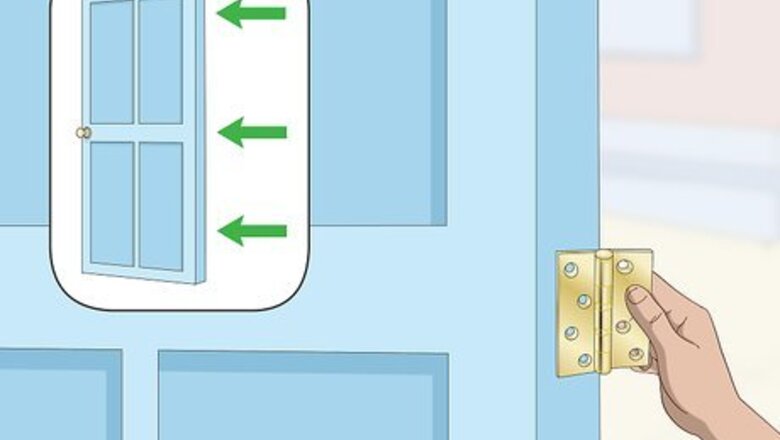
views
Marking the Hinge Spot
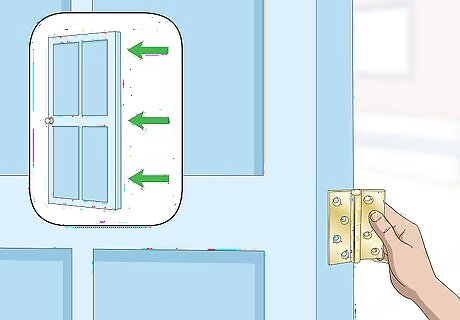
Place your hinge flush against the door. Position your door so you can clearly see the back edge. Then, place 1 of your hinge’s wings flush against the spot where you want it to sit. Typically, middle hinges go in the exact center of the door, top hinges sit 7 in (18 cm) below the top of the door, and bottom hinges rest 11 in (28 cm) above the bottom of the door. To make the installation process as simple as possible, use square-edged hinges that are either .25 in (0.64 cm) or .75 in (1.9 cm) thick. Look for door hinges at hardware and home improvement stores.
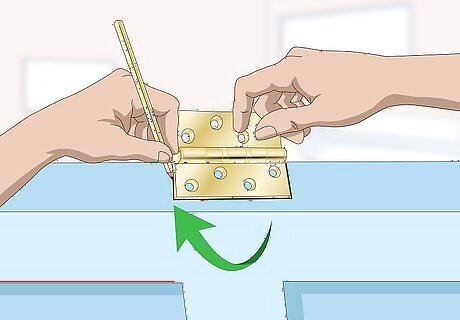
Draw an outline around the hinge using a pencil. Hold your hinge down to keep it steady. Then, take a sharpened pencil and draw lines around all 3 of the hinge’s edges. You’ll be using these lines as a guide, so try to make them as straight as possible. If necessary, go over the lines multiple times until they are thick and easy to see.
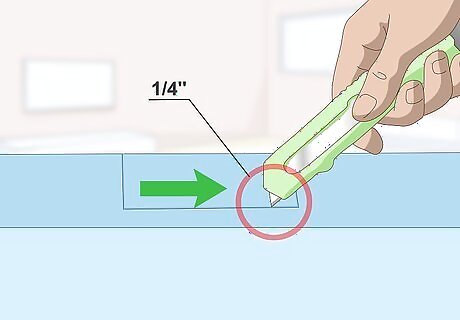
Score the outline with a utility knife. Once you’re happy with the outline, remove your hinge from the door. Then, grab a utility knife and extend the blade to no more than .25 in (0.64 cm). Drag the blade along each of the pencil lines, creating small grooves you’ll use later.
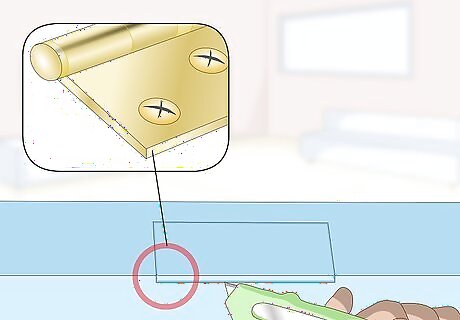
Mark the depth of the mortise with your utility knife. Place the tip of a hinge wing up to the front or back side of the door. Line the wing up so it is perpendicular with the outlined spot and, if necessary, mark this position with a pencil. Then, gently score the spot using your utility knife, creating a clear indication of how deep your mortise should be.
Making the Cuts
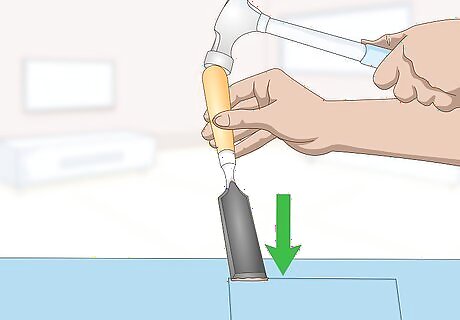
Tap a chisel into the scored outline. Place the edge of a sharp chisel into any of the mortise outline grooves. Then, gently tap the back end of the chisel with a hammer or mallet, pushing it into the door. Keep tapping until the groove is the same depth as your door hinge, then repeat the process until you’ve carved around the entire perimeter of the mortise spot.
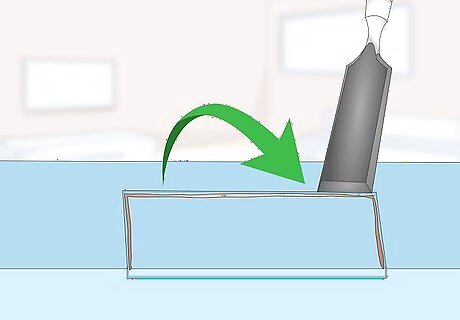
Create a series of angled chisel cuts between the outlines. Angle your chisel so it sits at about 45 degrees, making sure the beveled side faces up. Then, create angled cuts across the grain of the mortise spot by tapping the back of the chisel with your hammer or mallet. The cuts should be no more than .25 inches (0.64 cm) away from each other and cover the entire space between the outlines. To make the process as simple as possible, start at 1 end of the mortise spot and pull your chisel back after each cut. Just like with the outline, aim for a depth equal to the perpendicular knife mark.
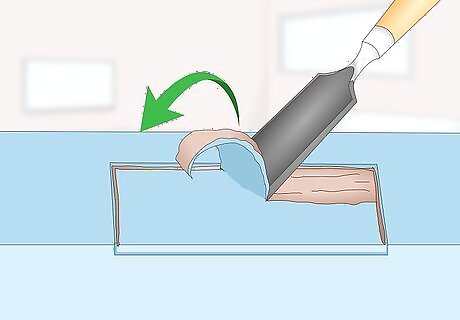
Pull your chisel over the grooves to remove them. Place the flat edge of your chisel between 2 of the grooves. Push down to apply a slight amount of force, then pull the tool backward, scraping the wood out of your mortise. Repeat this until you’ve removed the majority of the grooves.
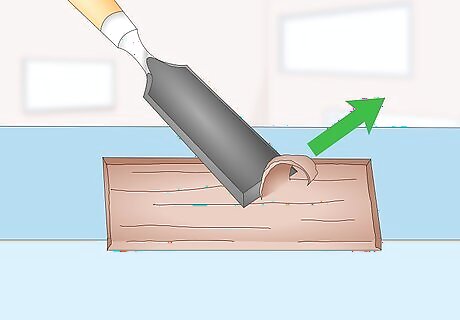
Scrape the mortise with your chisel to remove any remaining wood. After getting rid of the grooves, you’ll be left with a few remaining slivers and rough spots. You can remove these by placing your chisel flat against the mortise, beveled side facing up, and scraping away the excess wood.
Attaching the Hinge
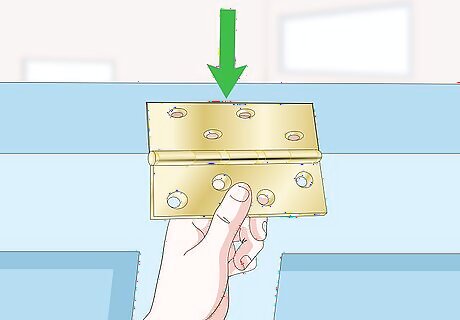
Place your hinge on the door. Once you’ve cleared out the mortise, place 1 of your door hinge’s wings up against it. The hinge’s center knuckle should sit on the side of the door you want to open toward yourself.
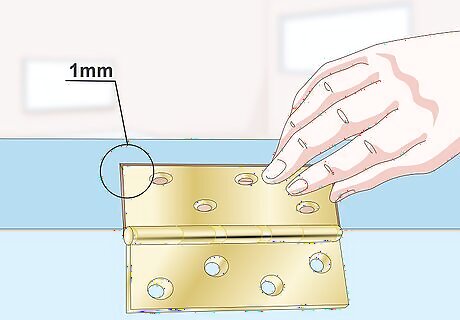
Check that the cut is the correct depth. When cut correctly, your mortise should sit flush against the edge of the door. Make sure the hinge is no more than 1 millimetre (0.039 in) off, since larger gaps could make the door too tight to open easily or too loose to close properly. Repeat the cutting process if the mortise isn’t deep enough. Glue small wooden shims on top of the mortise if it is too deep.
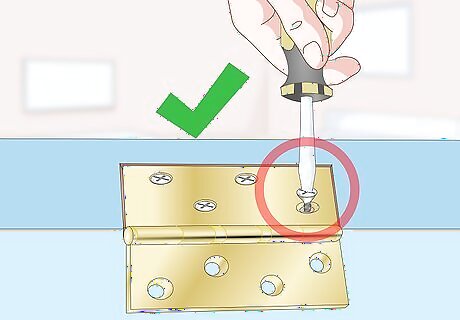
Secure the hinge with screws. If you’re happy with the mortise, fasten the door hinge to it by drilling small screws into each of the hinge wing’s bolt holes. The screws should be tight enough that, if you pull on the door hinge, they do not budge. Before fastening your door to a jamb or wall, make sure you’ve attached every hinge necessary.




















Comments
0 comment